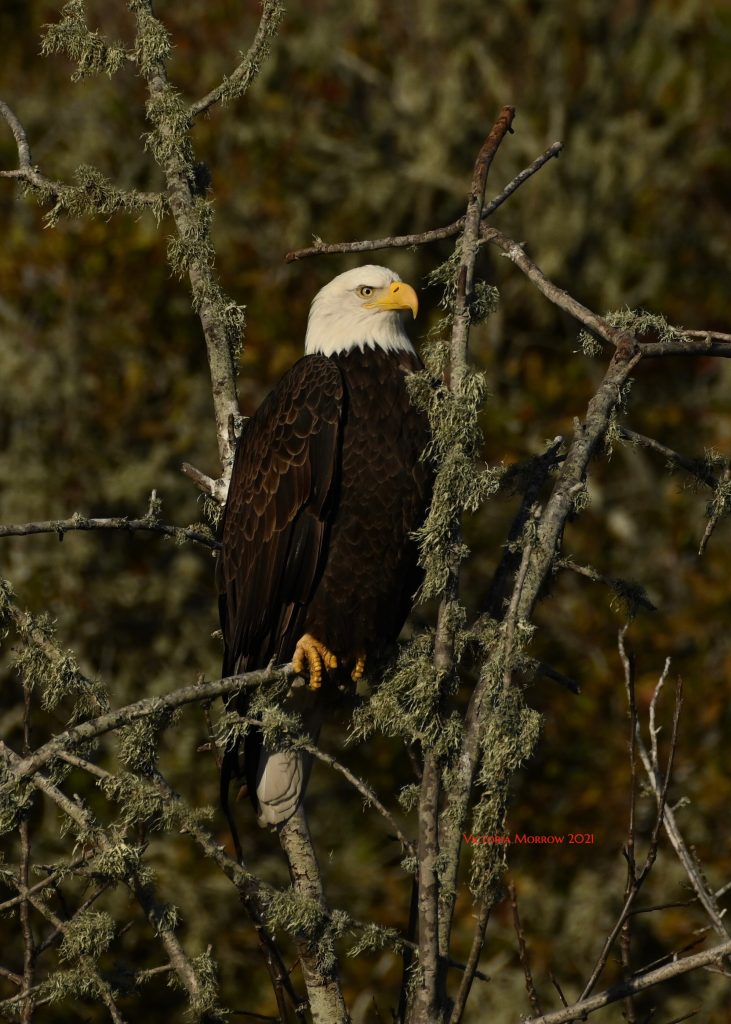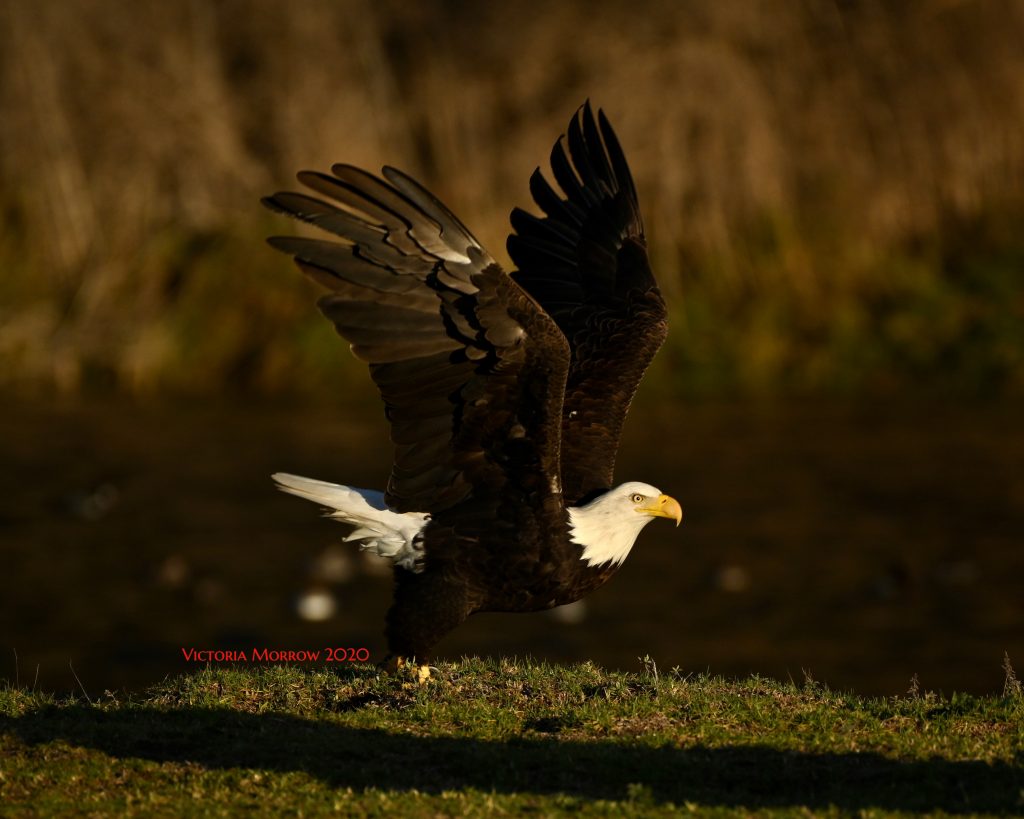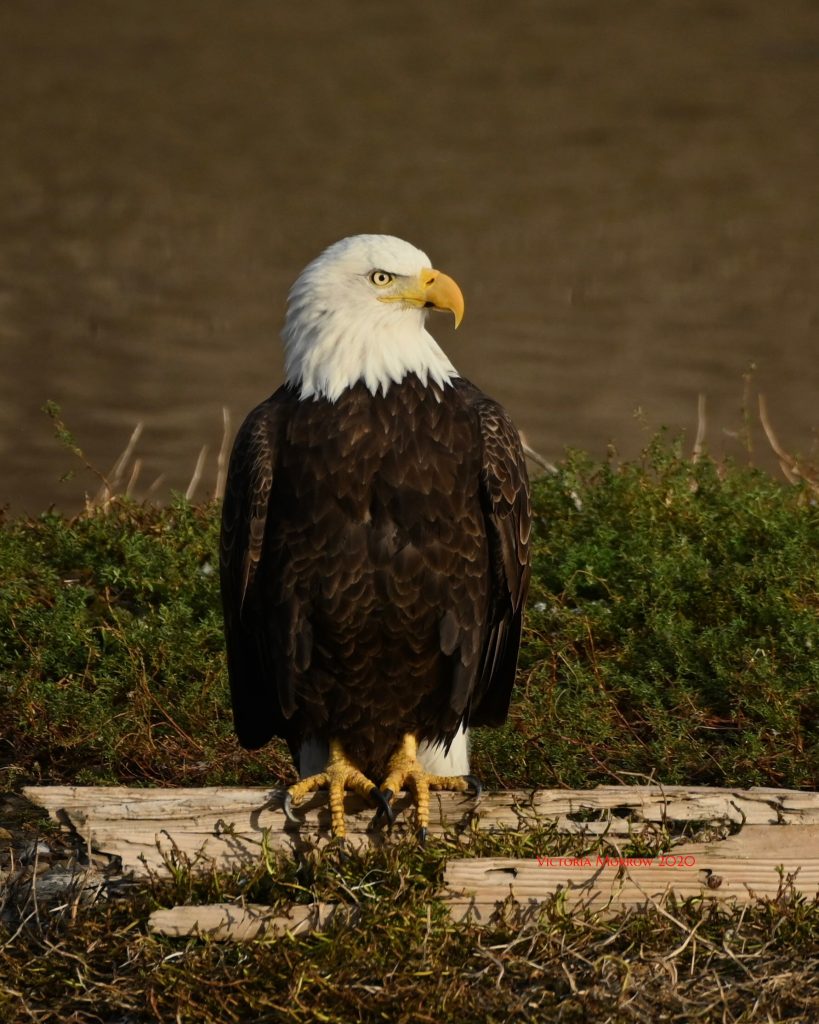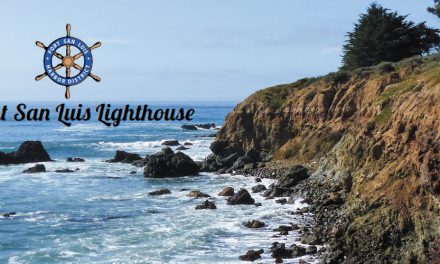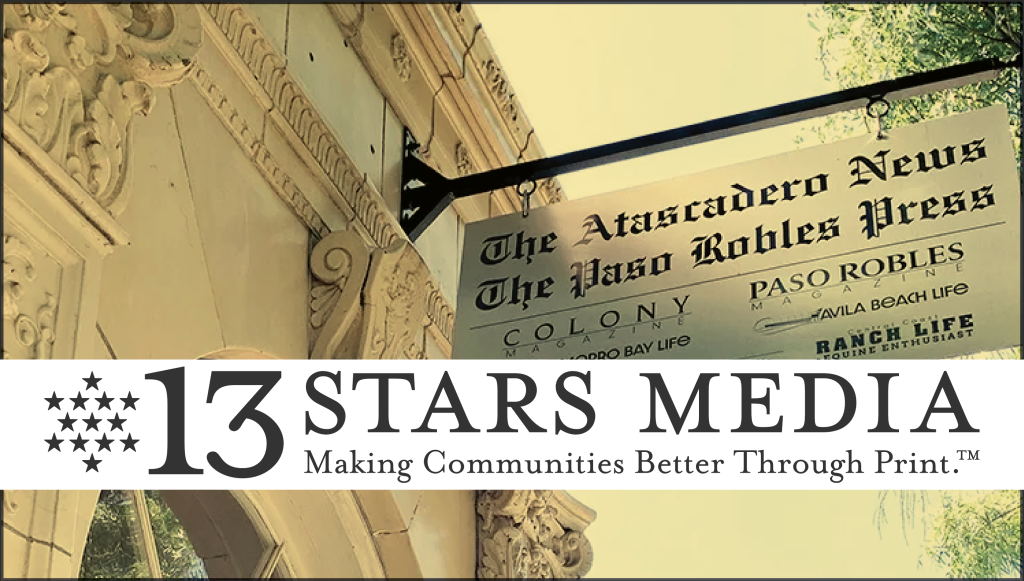By Betty Hartig
Avila Beach has been hosting a well-respected visitor. You can catch a glimpse of the guest by walking the Bob Jones Pathway. While strolling, pay close attention to where the San Luis Creek and the seawater meet. The estuary seems to be the favorite hangout. A big clue that the majestic lodger is nearby is serene quietness. Binoculars might be helpful, but not necessary. Are you curious about the out-of-towner?
A magnificent bald eagle (Haliaeetus leucocephalus) has been in the area since late November.
There is a good chance that it is migrating from the northwest and spending the winter on the Central Coast. The best time to view the mighty aviator is during the early morning or late afternoon. Eagles are a rare sight but have ventured into this region previously. Most likely, this fine specimen has been here to feast on the fish found in the estuary. Fish are the main diet of an eagle. An abundant supply of striped mullet is clearly visible from the golf course bridge.
A fresh mullet makes a tasty meal. Sushi!
Hundreds of migratory bald eagles select California as their wintering location, usually arriving during the fall and early winter. They normally remain until February, or occasionally April. It would be interesting to know where Avila’s visitor arrived from; perhaps it is a nearby non-migratory bird or a migratory distant traveler scoping out warmer winter climates like “snowbirds” do.
Observing the bald eagle in Avila is an awesome experience. It is a bonus feature to see such a distinguished bird of prey. The bald eagle is easily identified by its distinctive white head and tail. They are far from being bald, but the white-feathered head greatly contrasts with their dark brown body; hence the word “bald” was adopted as an appropriate name.
The adult raptor’s wingspan is about 8 feet. They weigh approximately 8 to 14 pounds and require a good food base. Their powerful talons have an incredible grip and can easily carry 3 to 4 pounds. Eagles have been known to snatch a fish from a rival osprey while in midair.
Nothing like being the boss or, more likely, a pirate! They also eat waterfowl, shorebirds, small mammals, and carrion. Bald eagles are visual hunters, using a strategically positioned perch or soaring high above to locate prey before swooping down to strike with stunning accuracy. Like most raptors, the female is larger than the male. Young eagles are predominantly brown and acquire their adult feathers at 4 or 5 years of age.
The bald eagle has been the national emblem of the United States since 1782. The regal bird’s national status was in competition with the wild turkey. It is hard to imagine a turkey adorning the top of a flagpole or placed on the Presidential Seal. If Benjamin Franklin had prevailed, our country’s emblem may have been the wild turkey. Fortunately, the eagle was chosen as the symbol.
Non-migratory nesting pairs of bald eagles are found throughout San Luis Obispo County. There are nesting sites at Lopez Lake, Santa Margarita Lake, and Santa Margarita Ranch, as well as the Pozo area. Bald eagles have a lengthy life, despite being close to extinction, typically living in the wild 20-30 years. This impressive bird has made an extraordinary comeback thanks to restrictions on contaminants, enforcement of protective laws, and management programs designed to improve its reproductive success and survival.
The bald eagle was removed from the Fish and Wildlife Service list of threatened and endangered species in 2007, but it remains endangered in California. The bird is still protected by the Migratory Bird Treaty Act and the Bald and Golden Eagle Protection Act. These laws prohibit killing, selling, or harming eagles, their nests, or eggs. The bald eagle is also classified as a fully protected bird under California law.
As responsible Californians and Avilones, it is wise to keep our coastal environment natural, free from adverse impacts on habitat, such as housing, pesticides, power lines, and other human disturbances, to ensure the continued health of this awe-inspiring bird. The eagle would be a welcomed Avila Beach permanent resident.


